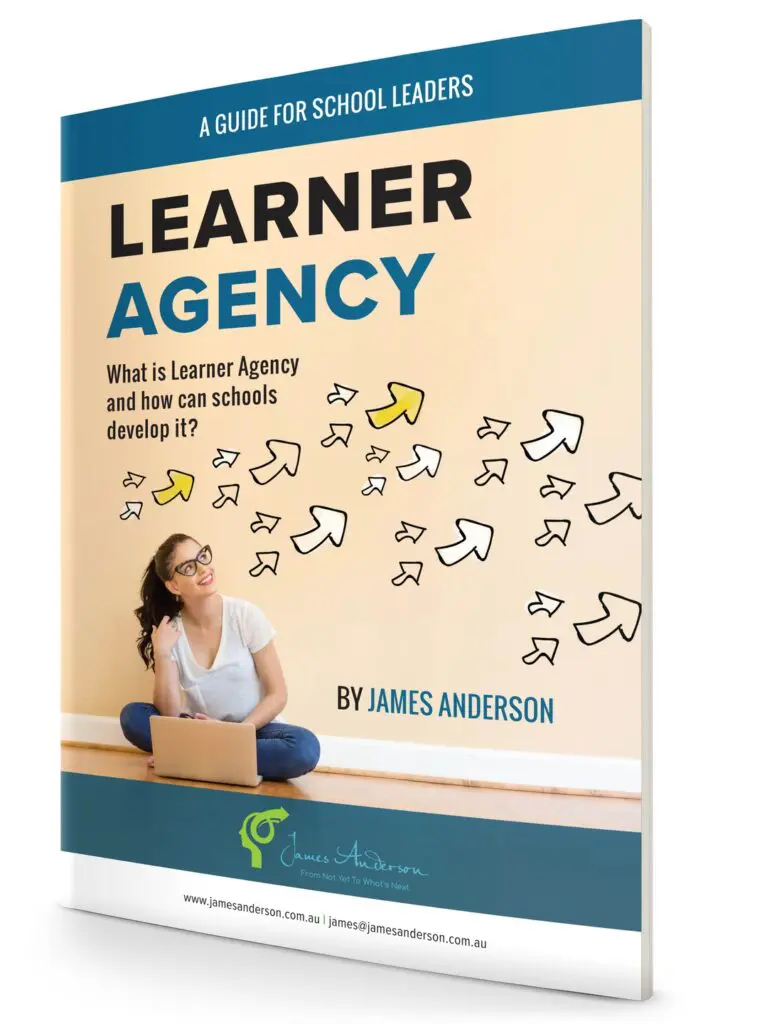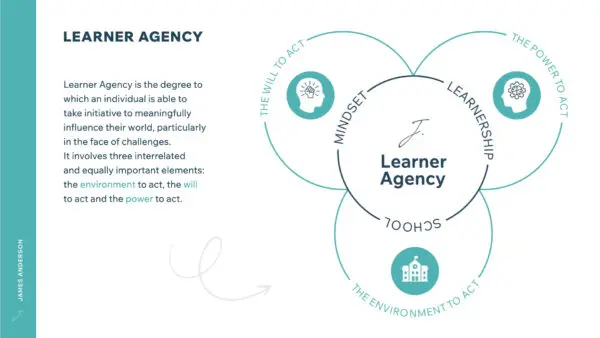The Truth About Learner Agency:
You can’t “give” students agency—it must be built
You’ve heard the term everywhere. Learner Agency is in policy documents, conference keynotes, and strategic plans. Your education department probably mandates it. And if you’re like most school leaders, you’ve interpreted it as giving students more voice and choice.
Let students choose their topics. Include them in decision-making. Ask for their input on school policies. Give them options in how they demonstrate learning.
You can’t ‘give’ students agency. Learner Agency is an outcome, not a pedagogy.
But we don’t often stop to notice that if this is our approach to Learner Agency, we’re not building it. We’re simulating it.
The Permission Trap
When we give students more choices in our schools, what are we really doing? We’re granting permission. They can choose their project topic—from our list. They can demonstrate learning—in ways we’ve approved. They can have a voice—in forums we’ve created.
This is what happens when we equate agency with voice and choice. We remove restrictions and call it empowerment. But students aren’t more capable of shaping their world—they’re just operating in a less restrictive environment.
Ironically, this approach can end up disempowering students. They learn that their “agency” exists only because the school grants it. The power still lies with the institution, not the learner. They must ask permission or wait for opportunities to choose.
Agency isn’t something students are given. It’s a capability they develop.
Real agency—the kind that matters when students leave your school—isn’t about having choices. It’s about having the capacity to create choices. To shape circumstances. To influence outcomes, particularly when facing challenges.
The Three Elements of Agency
That development requires three equally critical elements:
1. The Environment to Act
Yes, students need an environment without undue restrictions. But more importantly, they need an environment rich with challenges that stretch them beyond their current capabilities—into their Learning Zone.
If you only offer choices within students’ comfort zones, you’re giving permission, not building power. Real agency develops when students confront challenges they can’t easily overcome—challenges that force them to grow and raise their own bar.
Agency grows when students are stretched into their Learning Zone, not kept comfortable.
This means creating a culture where challenge is welcomed, not avoided. Where students see difficulty as opportunity, not threat. Where the question isn’t “What would you like to do?” but “What can’t you do yet that you need to learn?”
2. The Will to Act
Here’s where most agency initiatives fall apart. You can provide all the choice in the world, but if students don’t believe they can grow and change, they won’t act.
A growth mindset gives students the ‘will to act’—the belief that action can lead to change.
This is about mindset. Students with fixed mindsets might have choices, but they don’t believe those choices matter. They think their abilities are set, so why try? When they encounter obstacles, they see proof of their limitations rather than opportunities to grow.
Developing agency means moving students along the mindset continuum from fixed to growth. It means helping them understand that they can develop new capabilities. That effort leads to growth. That challenges are opportunities to expand what’s possible.
3. The Power to Act
This is perhaps the most overlooked element. Students need the actual skills to influence their world. They need what I call Learnership—the expertise in learning itself.
It’s not enough to want to change or have opportunities to change. Students must know how to change. How to approach challenges strategically. How to learn from mistakes. How to seek and use feedback. How to invest effort effectively.
Without the skills to learn independently, students remain dependent on others to lead them through growth.
This is where the Learnership Matrix becomes essential. It shows the progression from Non-Learners to Agile Learners—and it’s only the Independent and Agile Learners who can truly raise their own bar. They don’t just respond to challenges; they seek them out. They don’t just complete tasks; they extract learning from every experience.
Without these skills, students might have the environment and the will, but they lack the power. They’re like someone standing at the base of a mountain, wanting to climb, with no one stopping them—but having no idea how to actually ascend.
Your Leadership Role
Schools that successfully develop learner agency understand this critical distinction: agency is an outcome of these three elements working together, not a teaching method.
You can’t schedule “agency time” or implement an “agency programme.” You can’t download an agency unit plan. Because agency isn’t what you do to students or give to students. It’s what students develop when the right conditions exist.
As a leader, your role isn’t to grant students agency by loosening rules. It’s to lead a culture that deliberately develops all three elements:
- Ensure classrooms are places of productive challenge, not just comfort
- Move students along the Mindset Continuum toward more growth-oriented beliefs
- Build Learnership systematically so students can take charge of raising their own bar
Those conditions require systematic attention to all three elements. Remove restrictions, yes—but also provide challenges that demand growth. Develop growth mindsets—but also teach the skills of learning. Create opportunities—but ensure students have the capabilities to seize them.
Your role is not to loosen rules, but to build the environment, will, and power that create genuine agency.
Your Choice as a Leader
Walk through your school tomorrow with fresh eyes. Look past the voice and choice initiatives. Ask yourself: Are we building students’ capabilities to shape their world? Or are we just giving them permission to choose from options we provide?
Because there’s a vast difference between students who can only act when given permission and students who have the capability to act when faced with any challenge.
The first group has the illusion of agency. The second group has actual agency.
And in an uncertain future, our role as leaders is clear: we must ensure every student leaves school not just with choices, but with the environment, will, and power to truly shape their world.

